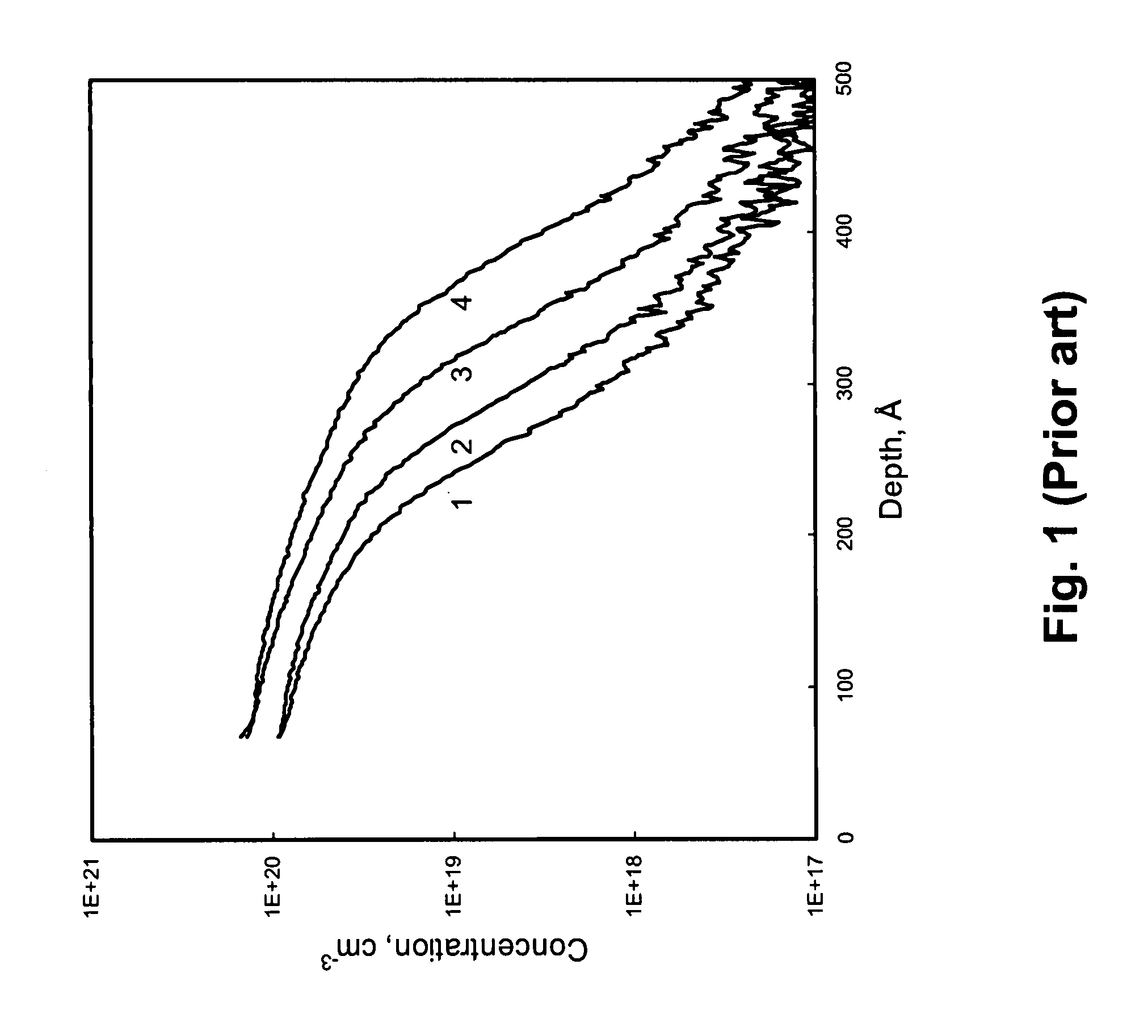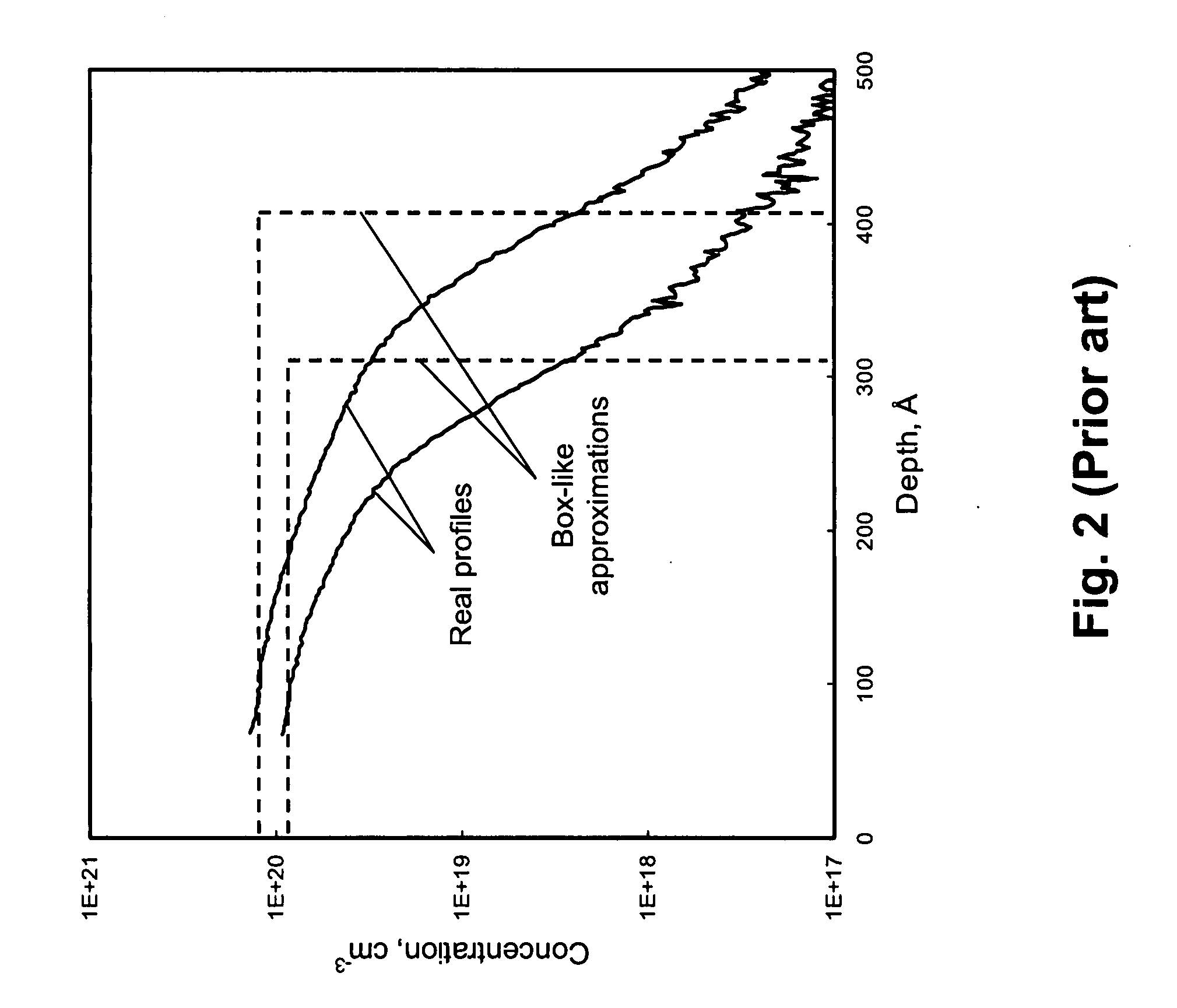Methods for depth profiling in semiconductors using modulated optical reflectance technology
a modulated optical reflectance and semiconductor technology, applied in the field of depth profiling in semiconductors using modulated optical reflectance technology, can solve the problems of reducing the total mor signal at certain experimental conditions, and affecting the accuracy of depth profiling
- Summary
- Abstract
- Description
- Claims
- Application Information
AI Technical Summary
Problems solved by technology
Method used
Image
Examples
Embodiment Construction
[0036]The present invention provides two different methods for depth profiling of parameters of interest in semiconductor materials using the MOR methodology. The first method is based on a simple reconstruction of the approximate depth profiles using experimental parameter values measured at certain depths below the surface of a sample. The second technique is a full forward and inverse problem method that utilizes MOR signals obtained by varying the experimental parameters such as different lateral beam offset distances (pump and probe beam separations), different modulation frequencies and / or different pump and probe beam wavelengths.
Apparatus Description
[0037]A schematic diagram of the MOR system capable of obtaining the measurements necessary to perform the methods of the subject invention is illustrated in FIG. 3.
[0038]System 10 includes a light source 20 for generating a pump beam of radiation 21. Pump beam source may be an intensity modulated laser or incoherent light source...
PUM
| Property | Measurement | Unit |
|---|---|---|
| wavelength | aaaaa | aaaaa |
| modulation frequency | aaaaa | aaaaa |
| spot size | aaaaa | aaaaa |
Abstract
Description
Claims
Application Information
 Login to View More
Login to View More - R&D
- Intellectual Property
- Life Sciences
- Materials
- Tech Scout
- Unparalleled Data Quality
- Higher Quality Content
- 60% Fewer Hallucinations
Browse by: Latest US Patents, China's latest patents, Technical Efficacy Thesaurus, Application Domain, Technology Topic, Popular Technical Reports.
© 2025 PatSnap. All rights reserved.Legal|Privacy policy|Modern Slavery Act Transparency Statement|Sitemap|About US| Contact US: help@patsnap.com



